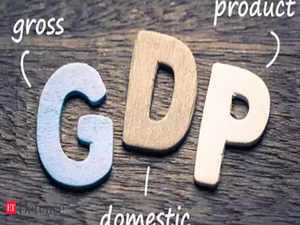 Agencies
Agencies“Whenever a new series of National Accounts Statistics is introduced with an updated base period, it is customary to link the old series to the series on the new base period,” the Ministry of Statistics and Programme Implementation said in a statement on Friday.
For the years prior to 2004-05, the estimates were compiled by adopting the splicing method, retaining the same growth rates of aggregates as in the old series.
“This is part of our mandate to bring out the entire back-series using a linking factor. This helps in bringing continuity. Questions were raised about the back series with the 2011-12 base. This is an academic exercise, without any political implication,” an official said.
It will help compare recent GDP growth over a long series since the new system revised the base year from FY05 to FY12 and changed the methodology and sources of data collection.
“This exercise is useful for those who want to look at growth for a long time period. We need long time data for other macro variables which use GDP as the reference such as fiscal deficit, savings rate and investment rate,” said NR Bhanumurthy, professor at the National Institute of Public Finance and Policy.
The linked series has come at a time when the government has faced flak for revising GDP data under the new series. One such case was the sharp revision in GDP growth for FY17, the year of demonetisation, from 7.1% to 8.2%.
Moreover, many economists have criticised the government when an estimate of back-series GDP data for the last decade by a committee appointed by the National Statistical Commission was at variance with that of the Central Statistics Office (CSO). The CSO’s official data sharply lowered growth estimates for the period from 2005-06 to 2013-14.
MCA-21,crops
While the current series uses the MCA-21 database, which stabilised only after 2010-11, the government has used “alternative exercises... using different approaches.”
MCA-21 is a government portal that allows electronic filings of various documents under the Companies Act and that data is used in GDP estimates.
“The available alternatives were critically examined, and it emerged that a single uniform approach across all the sectors may not be appropriate and a mixed approach would be inevitable for the estimation of back-series,” it said.
Moreover, separate estimates for some crops were published for the first time in the 2011-12 series. For these crops, the back-series estimates, as per the new base, have been prepared using the growth rate of the sub-group of crops that they belonged to the earlier back-series (2004-05 base). For example, the back-series estimates of moth, val, rajma, cowpea, chola, lakh/khesri, peas/chawali, batna and other pulses have been prepared by using growth rates of other pulses observed in the previous series.
A similar approach has been followed for preparing estimates of various ‘other’ fruits/vegetables/pulses for the years 2004-05 to 2010-11, whose estimates were published for the first time with the 2011-12 base.
The estimates of stock exchanges, stock broking companies and asset management companies have been computed as 2% of the gross value added of the remaining financial sector for all the years from 1950-51 to 2004-05. This has been done since these enterprises were included in the estimates of financial corporations for the first time in the series based on 2011-12 when the contribution of these segments was found to be 2% of the remaining financial sector.
Download The Economic Times News App to get Daily Market Updates & Live Business News.
Subscribe to The Economic Times Prime and read the ET ePaper online.
Download The Economic Times News App to get Daily Market Updates & Live Business News.
Subscribe to The Economic Times Prime and read the ET ePaper online.









 Get Unlimited Access to The Economic Times
Get Unlimited Access to The Economic Times
